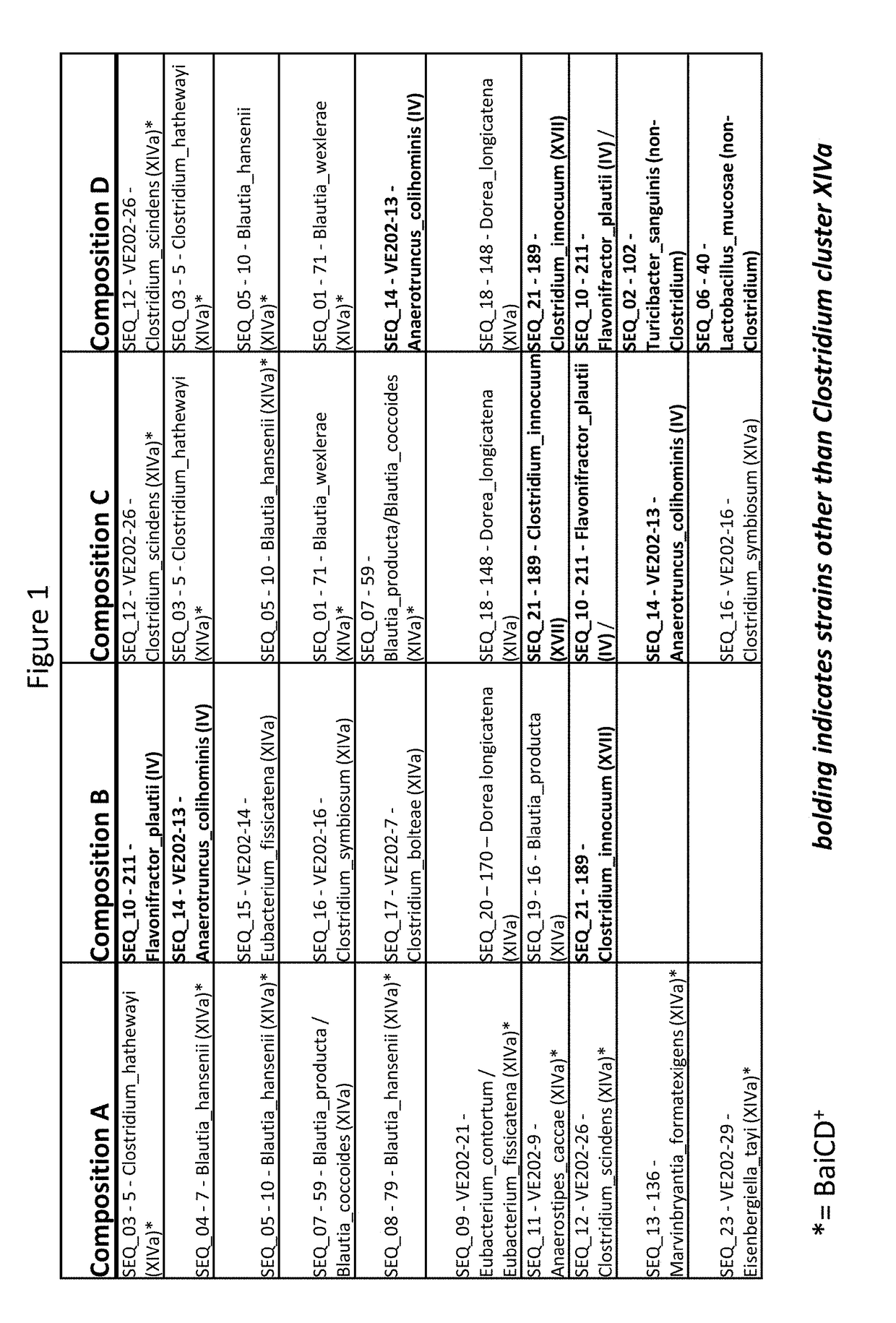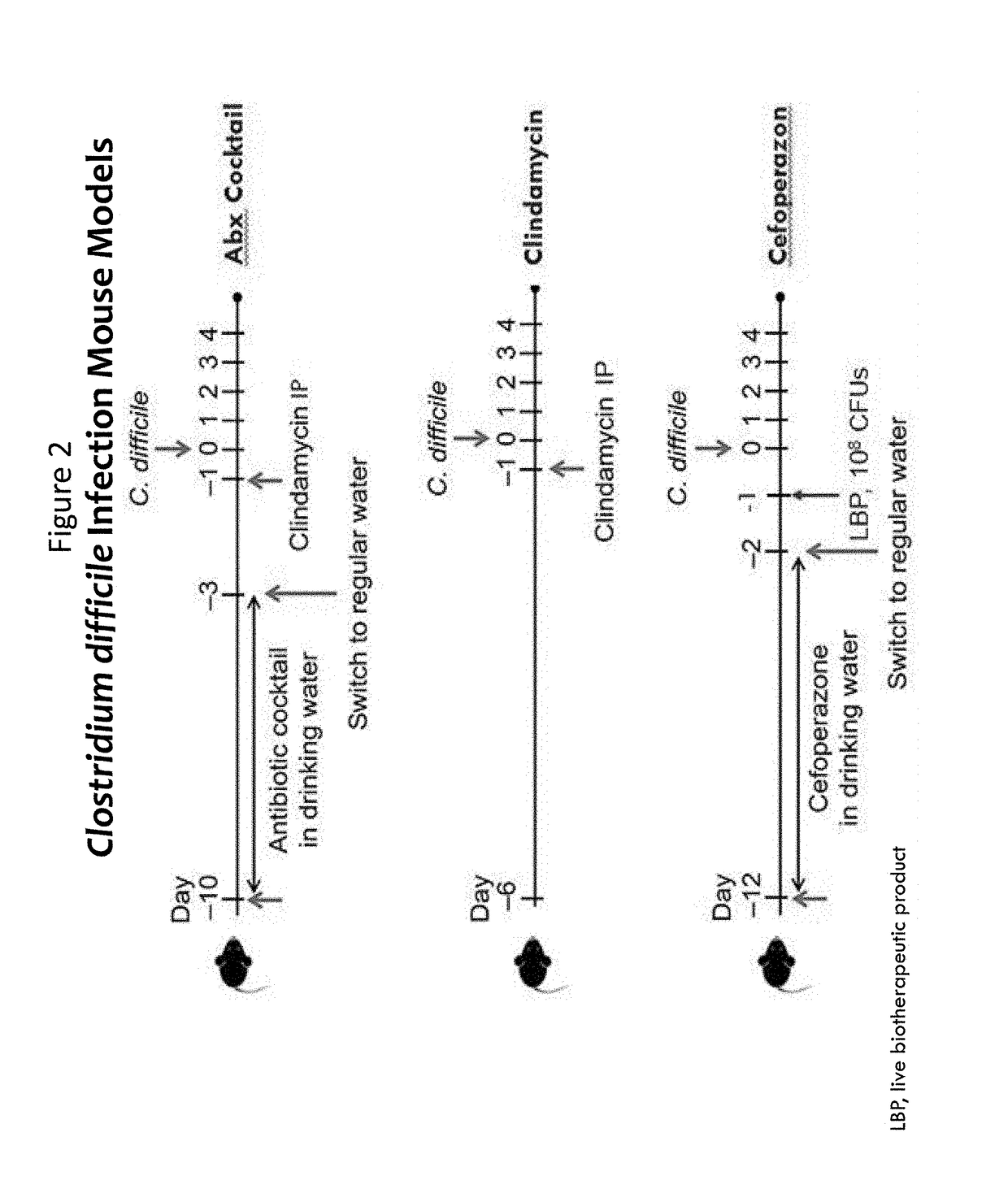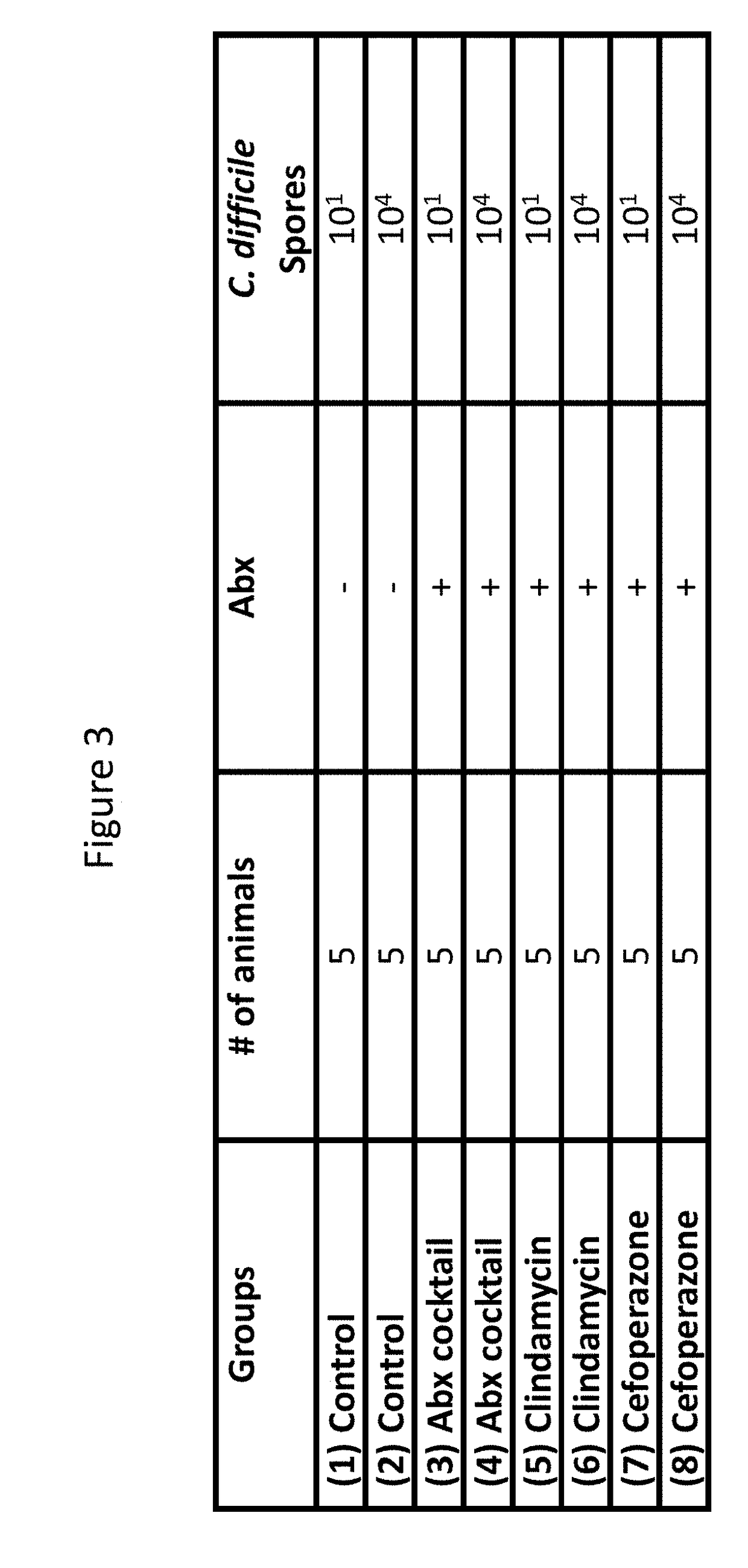Treatment of clostridium difficile infection
a technology of clostridium difficile and purified bacteria, which is applied in the direction of antibacterial agents, bacteria material medical ingredients, saccharide peptide ingredients, etc., can solve the problems of difficult selection of fmt donors, insufficient metronidazole, and insufficient therapeutic approaches, etc., to achieve the effect of reducing the number of fmt donors, facilitating replication and/or survival, and reducing the number of fm
- Summary
- Abstract
- Description
- Claims
- Application Information
AI Technical Summary
Benefits of technology
Problems solved by technology
Method used
Image
Examples
example 9
tion of In Vitro Short-Chain Fatty Acid Production
[0382]Each strain of Composition B was assessed for individual short-chain fatty acid (SCFA) production in vitro. Composition B strains were grown in pure cultures inside an anaerobic chamber. Spent supernatant from liquid media cultures was harvested by centrifugation, filter sterilized, and then stored at <−70° C. Frozen clarified supernatant specimens were analyzed for short-chain fatty acids (SCFAs).
[0383]EG+HB agar plates (Eggerth-Gagnon agar plates with horse blood) were prepared according to standard methods and reduced in an anaerobic environment for at least 6-8 hours prior to use. Liquid PYG medium (pre-formulated, pre-reduced) was obtained from Anaerobe Systems (Catalog#AS-822; Morgan Hill, Calif.).
[0384]Strains were struck out onto EG+HB agar plates from frozen 15% glycerol stocks inside an anaerobic chamber for 48-72 hours. Single colonies were inoculated into 7 mL PYG media and grown 24-48 hours at 37° C. in the anaerob...
example 10
n B Induces Regulatory T Cells (Tress)
[0386]Each of the bacterial strains of Composition B were grown to log phase, combined to a total dose of ˜108 cfu per mouse. Germ-free mice were inoculated with Composition B or a negative control by oral gavage and sacrificed following four weeks of colonization. Lamina propria leukocytes were isolated from colonic tissue of individual mice by standard procedures and assessed by flow cytometry. The regulatory T cell content was evaluated as the percentage of Foxp3-positive cells among CD4+ T cells.
[0387]As shown in FIG. 32, mice that were inoculated with Composition B were found to have significantly more regulatory T cells as compared to mice that were inoculated with the control.
PUM
| Property | Measurement | Unit |
|---|---|---|
| pharmaceutical composition | aaaaa | aaaaa |
| pH | aaaaa | aaaaa |
Abstract
Description
Claims
Application Information
 Login to View More
Login to View More - R&D
- Intellectual Property
- Life Sciences
- Materials
- Tech Scout
- Unparalleled Data Quality
- Higher Quality Content
- 60% Fewer Hallucinations
Browse by: Latest US Patents, China's latest patents, Technical Efficacy Thesaurus, Application Domain, Technology Topic, Popular Technical Reports.
© 2025 PatSnap. All rights reserved.Legal|Privacy policy|Modern Slavery Act Transparency Statement|Sitemap|About US| Contact US: help@patsnap.com



